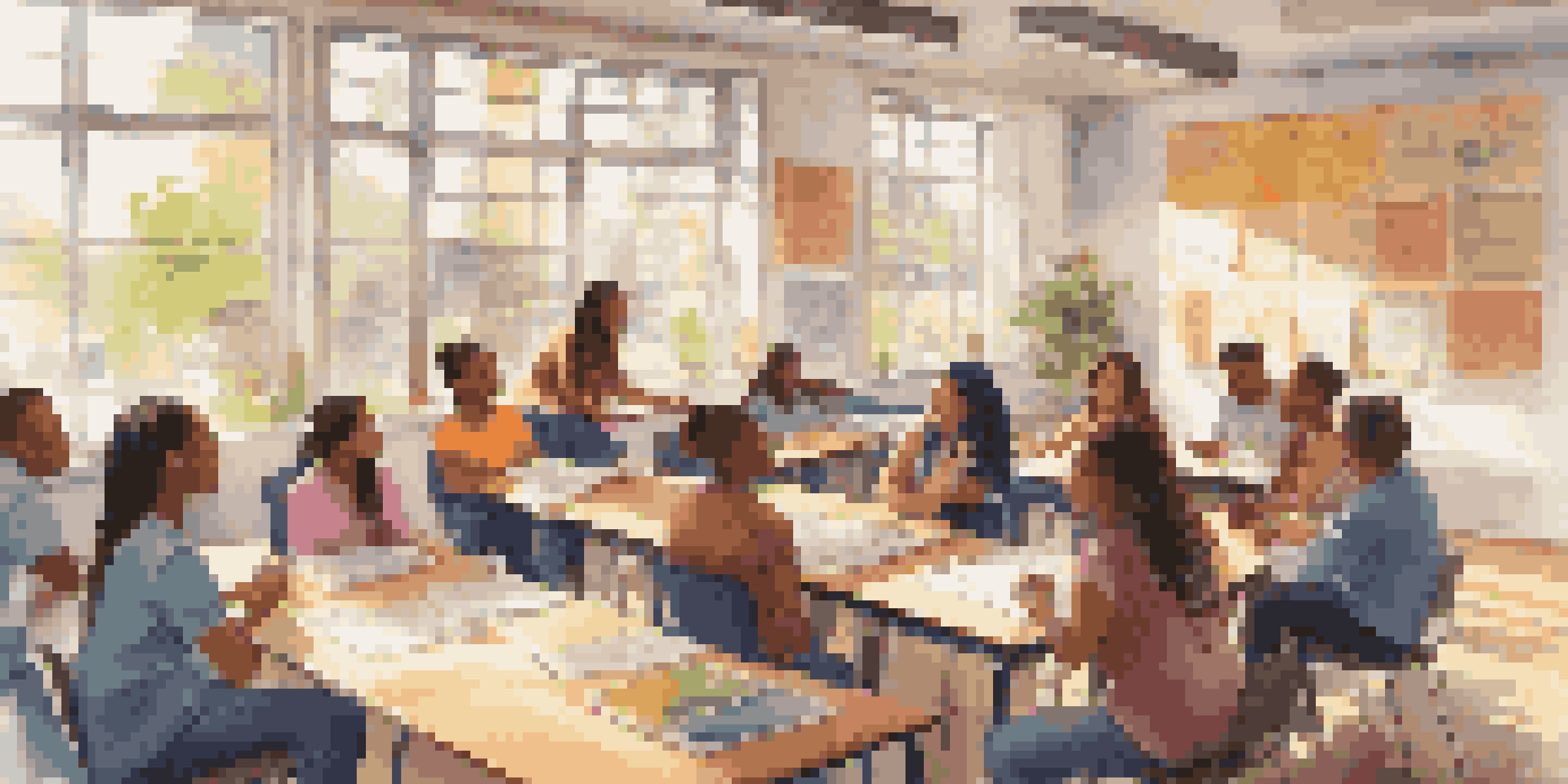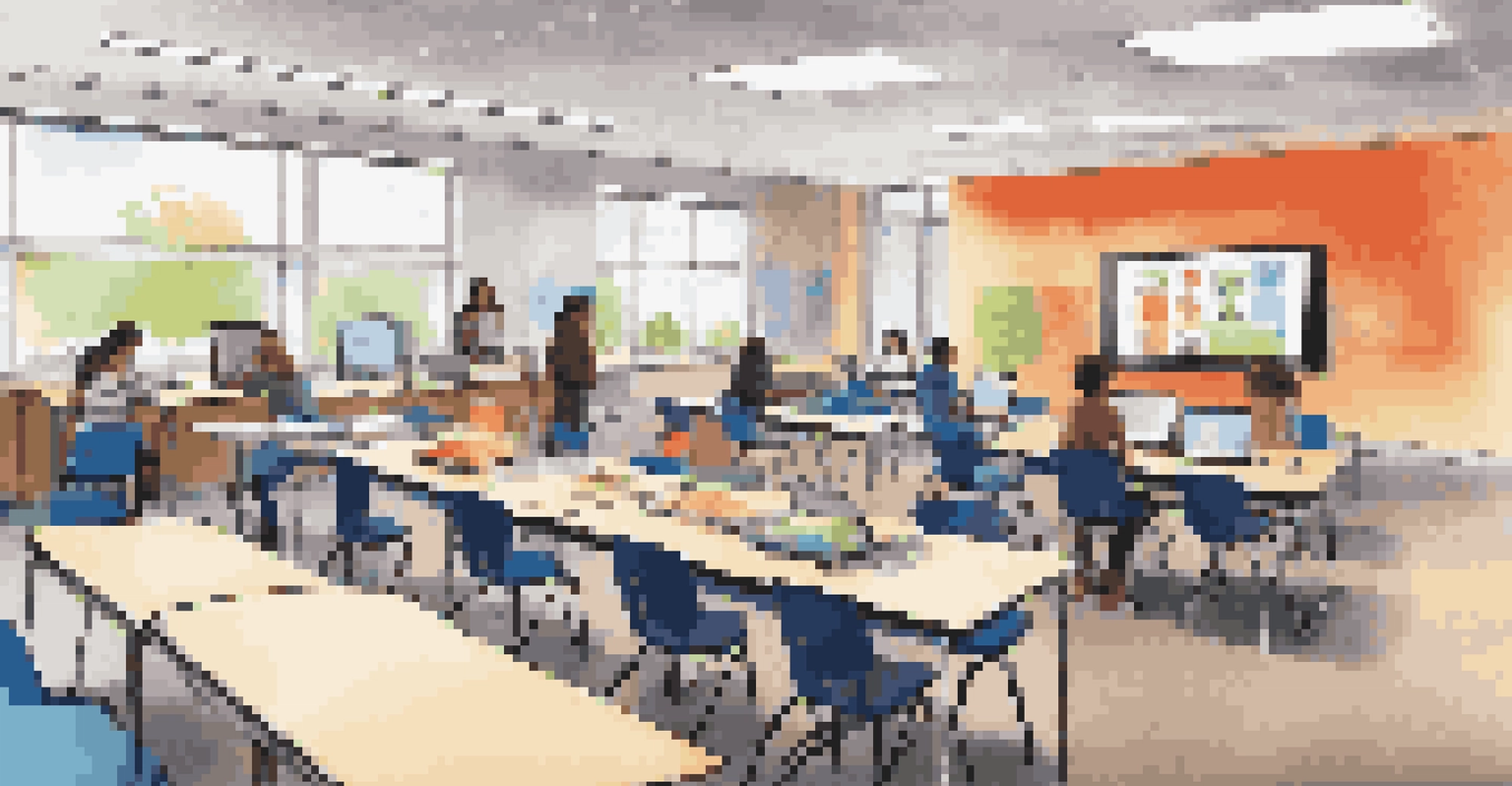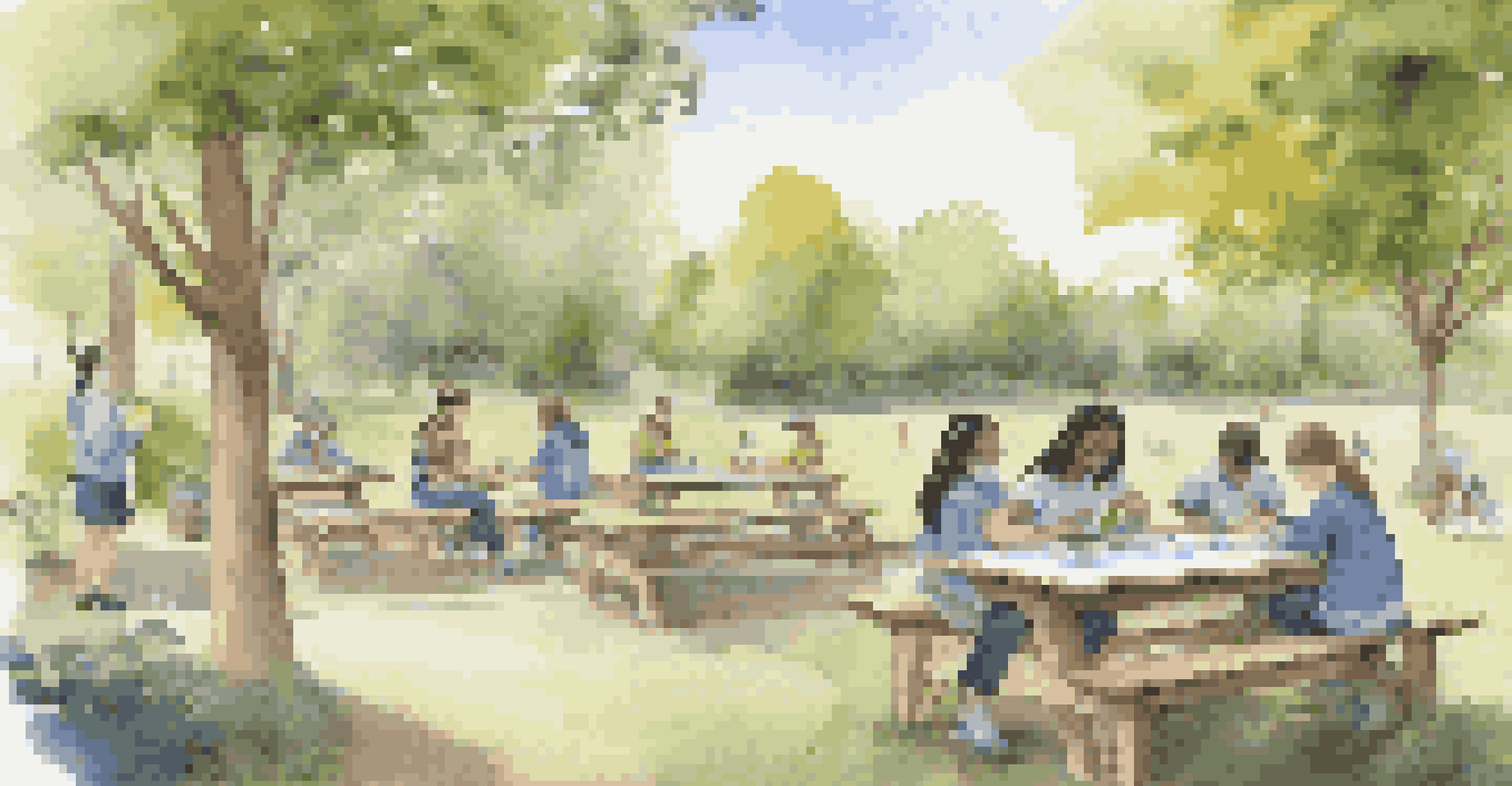Designing Curriculum with a Focus on Learner-Centered Strategies

Understanding Learner-Centered Curriculum Design
A learner-centered curriculum focuses on the needs and interests of students rather than the preferences of educators. This approach encourages active participation, fostering a sense of ownership in the learning process. By considering how students learn best, educators can create a more engaging and effective educational experience.
Tell me and I forget. Teach me and I remember. Involve me and I learn.
In this model, the role of the teacher shifts from being the sole source of knowledge to a facilitator of student learning. Teachers guide and support students as they explore concepts and develop critical thinking skills. This collaboration creates a dynamic classroom environment where students feel valued and motivated.
Ultimately, a learner-centered curriculum promotes deeper understanding and retention of information. When students are actively involved in their education, they are more likely to connect with the material and apply it in real-world situations. This connection is vital for developing lifelong learners who are equipped to face challenges beyond the classroom.
Identifying Learner Needs and Preferences
The first step in designing a learner-centered curriculum is to identify the needs and preferences of your students. This can be achieved through surveys, interviews, or informal discussions. Understanding their interests, learning styles, and motivations allows you to tailor the curriculum to meet their diverse needs.

For instance, some students may thrive in collaborative settings, while others may prefer independent work. By acknowledging these differences, educators can create opportunities for various learning experiences. This ensures that every student is engaged and can find success in their learning journey.
Focus on Learner Needs
Designing a curriculum that prioritizes students' interests and learning styles enhances their engagement and success.
Moreover, recognizing and addressing individual needs fosters an inclusive classroom environment. It helps build a sense of community where all students feel respected and understood. When students see that their preferences are valued, they are more likely to participate actively in their education.
Incorporating Active Learning Strategies
Active learning strategies are essential in a learner-centered curriculum, as they engage students in the learning process. Techniques such as group discussions, hands-on projects, and problem-based learning encourage students to take an active role in their education. These strategies not only promote collaboration but also enhance critical thinking and problem-solving skills.
The only limit to our realization of tomorrow will be our doubts of today.
For example, consider a science class where students conduct experiments to explore concepts firsthand. Instead of passively listening to lectures, they actively engage with the material, fostering deeper understanding. This experiential learning approach makes the content more relatable and memorable.
Additionally, active learning strategies can cater to various learning styles. Whether students are visual, auditory, or kinesthetic learners, incorporating diverse activities helps ensure that everyone can find a way to connect with the material. This adaptability is key to fostering a supportive and effective learning environment.
Creating Collaborative Learning Environments
Collaboration plays a crucial role in learner-centered curriculum design. By promoting teamwork and peer interaction, students can learn from each other and develop essential social skills. Collaborative learning environments encourage communication, respect, and empathy among students, creating a positive classroom culture.
For instance, group projects allow students to share their strengths, learn from one another, and collectively problem-solve. This not only enhances their understanding of the subject matter but also builds essential skills for future collaboration in the workplace. Such experiences foster a sense of belonging and community within the classroom.
Active Learning Strategies
Incorporating hands-on activities and collaborative projects fosters deeper understanding and critical thinking skills.
Moreover, collaborative learning promotes accountability. When students work together, they are more likely to stay engaged and motivated, as they feel a sense of responsibility towards their peers. This shared commitment can lead to improved academic outcomes and a more enriching educational experience.
Utilizing Technology in Curriculum Design
Incorporating technology into a learner-centered curriculum can enhance engagement and accessibility. Tools such as interactive learning platforms, educational apps, and virtual classrooms provide students with diverse ways to explore content. Technology not only supports traditional learning methods but also opens doors to innovative educational experiences.
For example, using online discussion boards allows students to collaborate on projects and share insights outside the classroom. This flexibility can be particularly beneficial for students who may need extra time to process information or those who thrive in a digital environment. Technology can help bridge gaps and cater to individual learning preferences.
Moreover, technology can facilitate personalized learning experiences. Educators can leverage data analytics to track student progress and tailor instruction to meet specific needs. This targeted approach ensures that all learners receive the support they require, making education more effective and inclusive.
Assessment Strategies for Learner-Centered Curriculum
Assessment in a learner-centered curriculum should focus on measuring student understanding and growth rather than merely assigning grades. Formative assessments, such as quizzes, peer reviews, and reflective journals, provide valuable insights into student progress. These tools help educators identify areas for improvement and adapt instruction accordingly.
For example, implementing regular feedback sessions allows students to reflect on their learning experiences and set personal goals. This process encourages self-assessment and accountability, making students active participants in their educational journey. By prioritizing growth over grades, educators foster a growth mindset among learners.
Promote a Growth Mindset
Encouraging students to embrace challenges and learn from failures cultivates resilience and a passion for lifelong learning.
Additionally, incorporating a variety of assessment methods caters to diverse learning styles. While some students may excel in traditional exams, others may demonstrate their understanding through creative projects or presentations. This flexibility ensures that every student has the opportunity to showcase their knowledge in a way that resonates with them.
Fostering a Growth Mindset in Students
A learner-centered curriculum should emphasize the importance of a growth mindset, encouraging students to embrace challenges and learn from failures. When students believe that their abilities can improve with effort and perseverance, they are more likely to take risks and engage deeply in their learning. This mindset fosters resilience and determination, essential qualities for lifelong success.
Educators can promote a growth mindset by providing constructive feedback that focuses on effort and improvement rather than innate ability. Celebrating small wins and encouraging students to view mistakes as learning opportunities can significantly impact their self-esteem and motivation. This positive reinforcement helps cultivate an environment where students feel comfortable taking intellectual risks.

Ultimately, fostering a growth mindset empowers students to take charge of their learning. As they recognize their potential and develop confidence in their abilities, they become more enthusiastic about exploring new ideas and challenging themselves. This transformative approach creates a generation of learners who are adaptable, innovative, and ready to face the future.